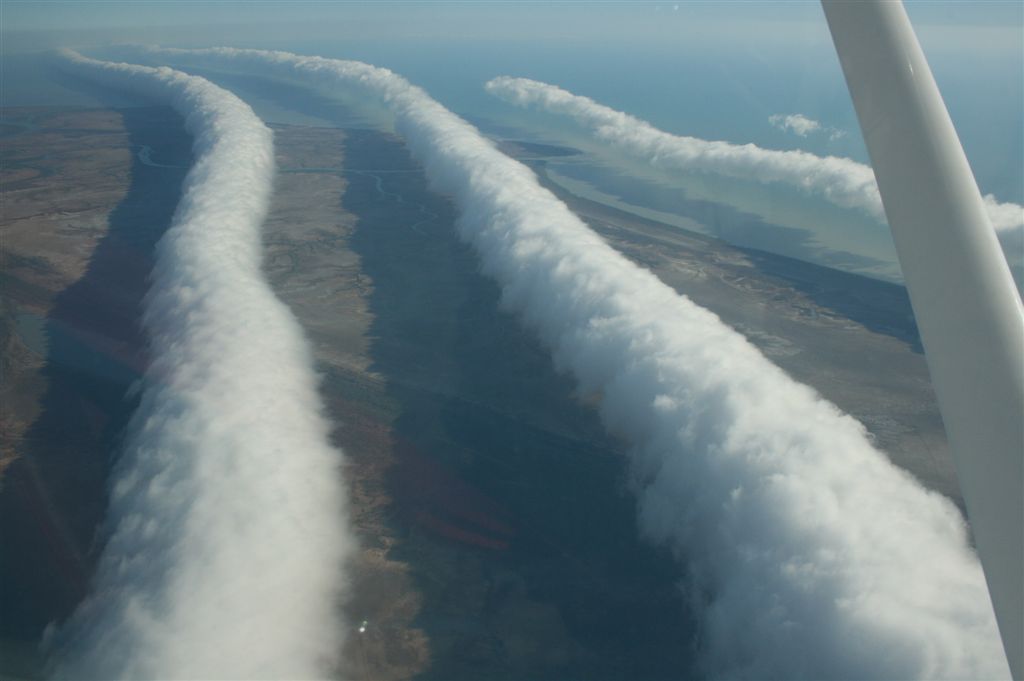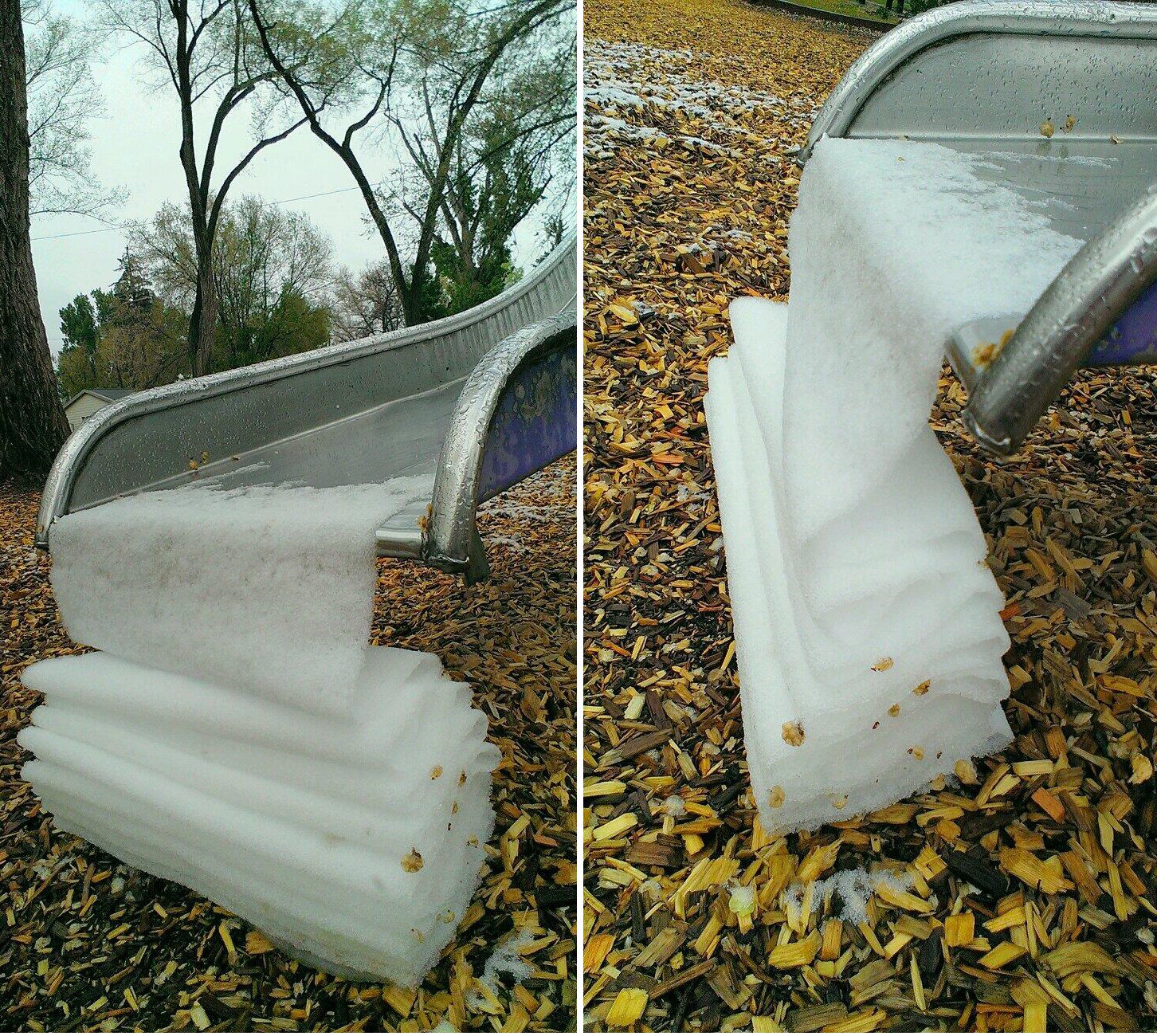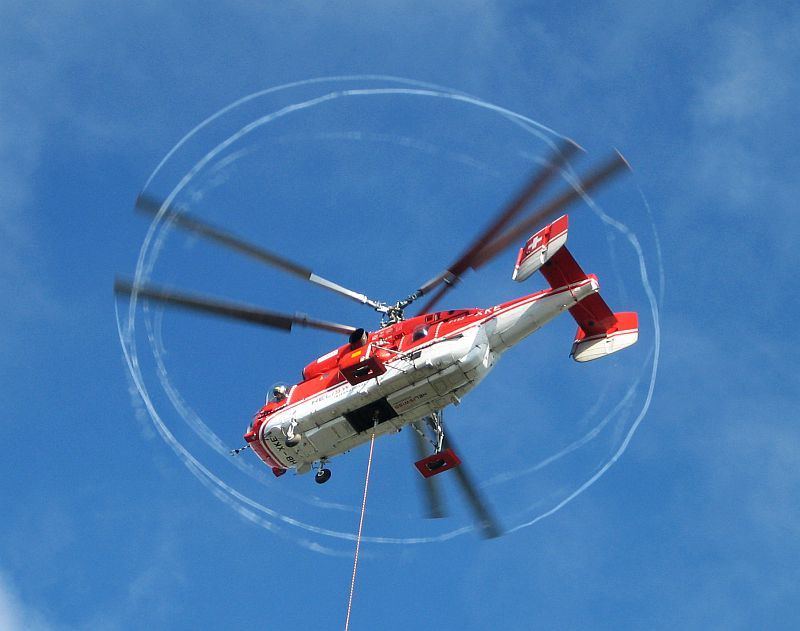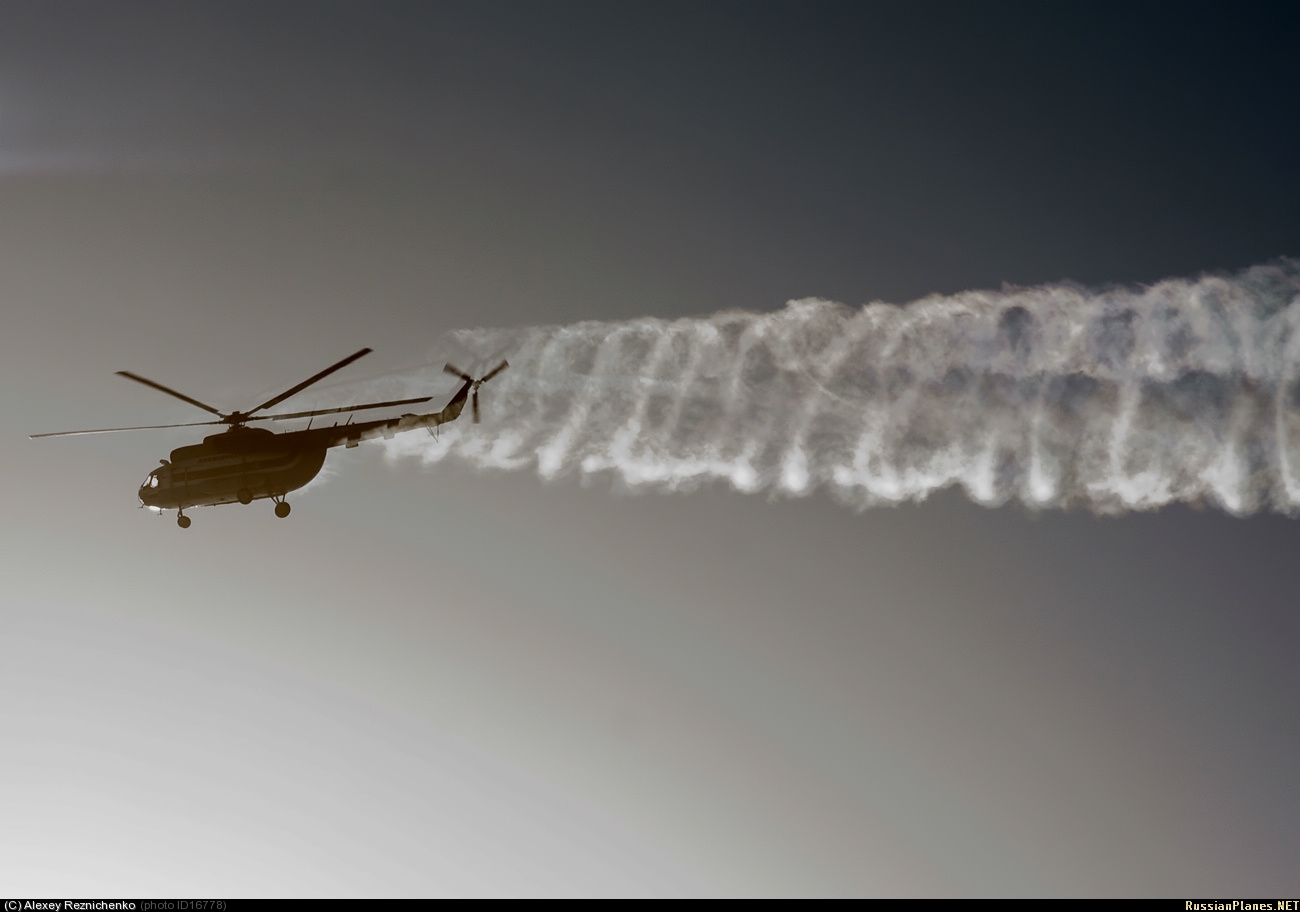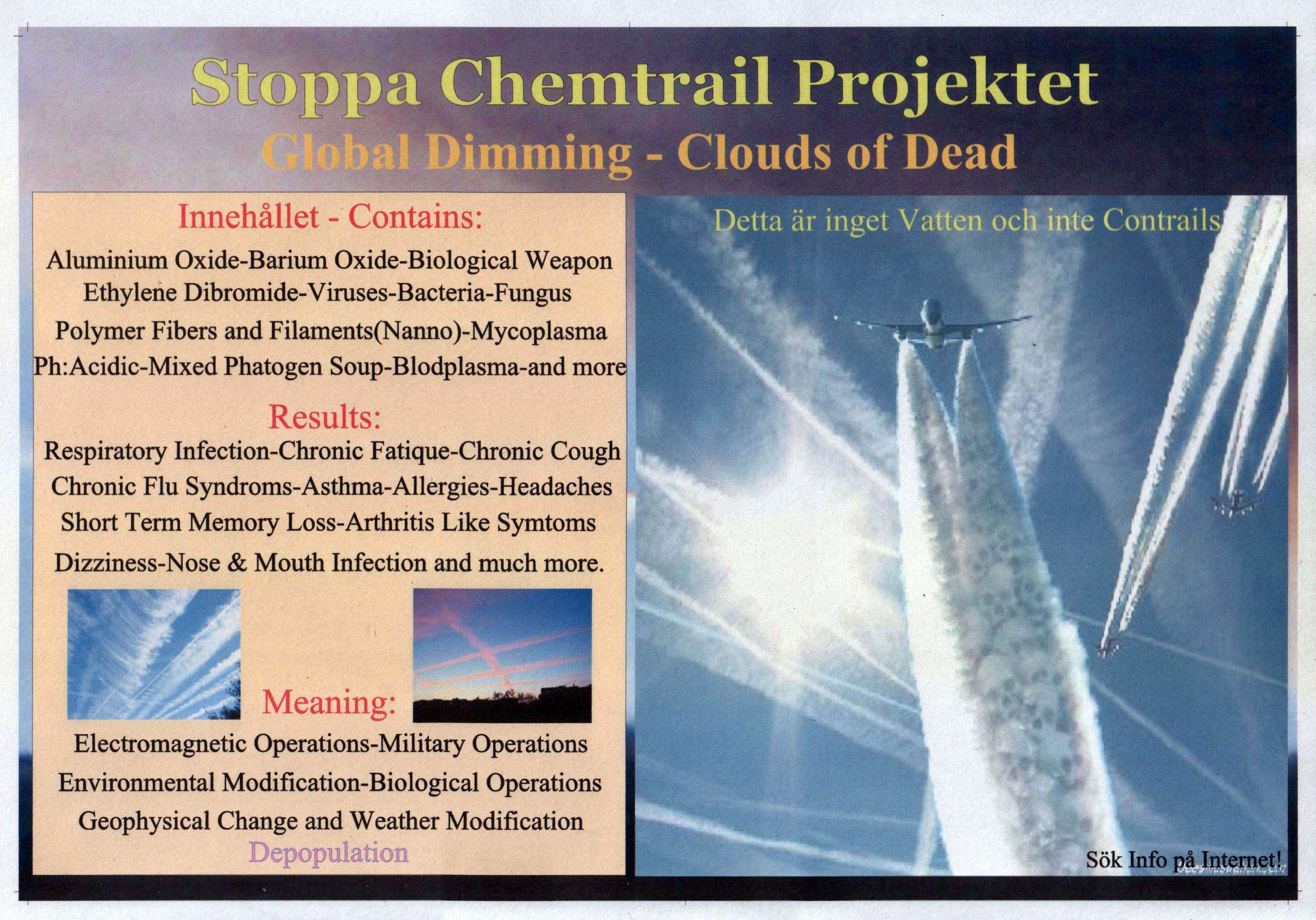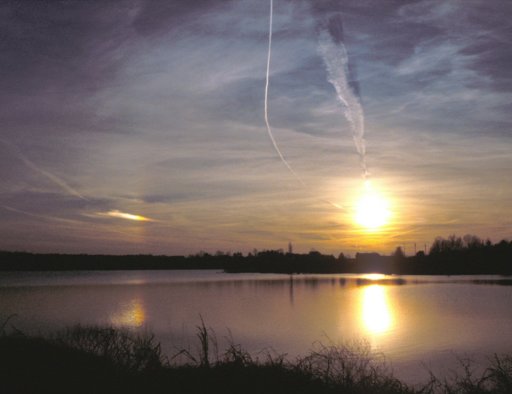8 Amazing Natural Phenomena
September 27, 2014 | by Lisa Winter
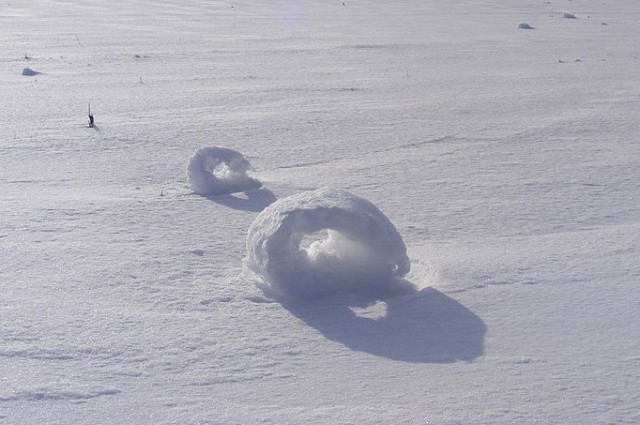
photo credit: Salvi5, via Wikimedia Commons
Share on facebook4K Share on twitter14 Share on reddit Share on google_plusone_share More Sharing Services
Fire rainbows
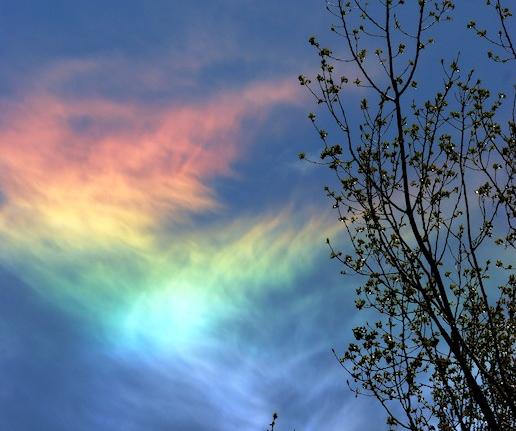
Image credit:
Derek W
Properly known as
circumhorizontal arcs, fire rainbows form when the sun is higher than 58° in the sky. When the sunlight passes through plate-like ice crystals suspended in wispy cirrus clouds, it looks like the cloud has been turned into a rainbow.
Frost flowers

Image credit:
NOAA/Glen Conner
When the temperature of the air is below the freezing temperature of water, but the ground isn’t,
frost flowers can form. Thin stems of plants can freeze and crack, but the roots will continue to draw up water. This capillary action causes the water to draw up and out, freezing upon hitting the cold air.
Basalt columns
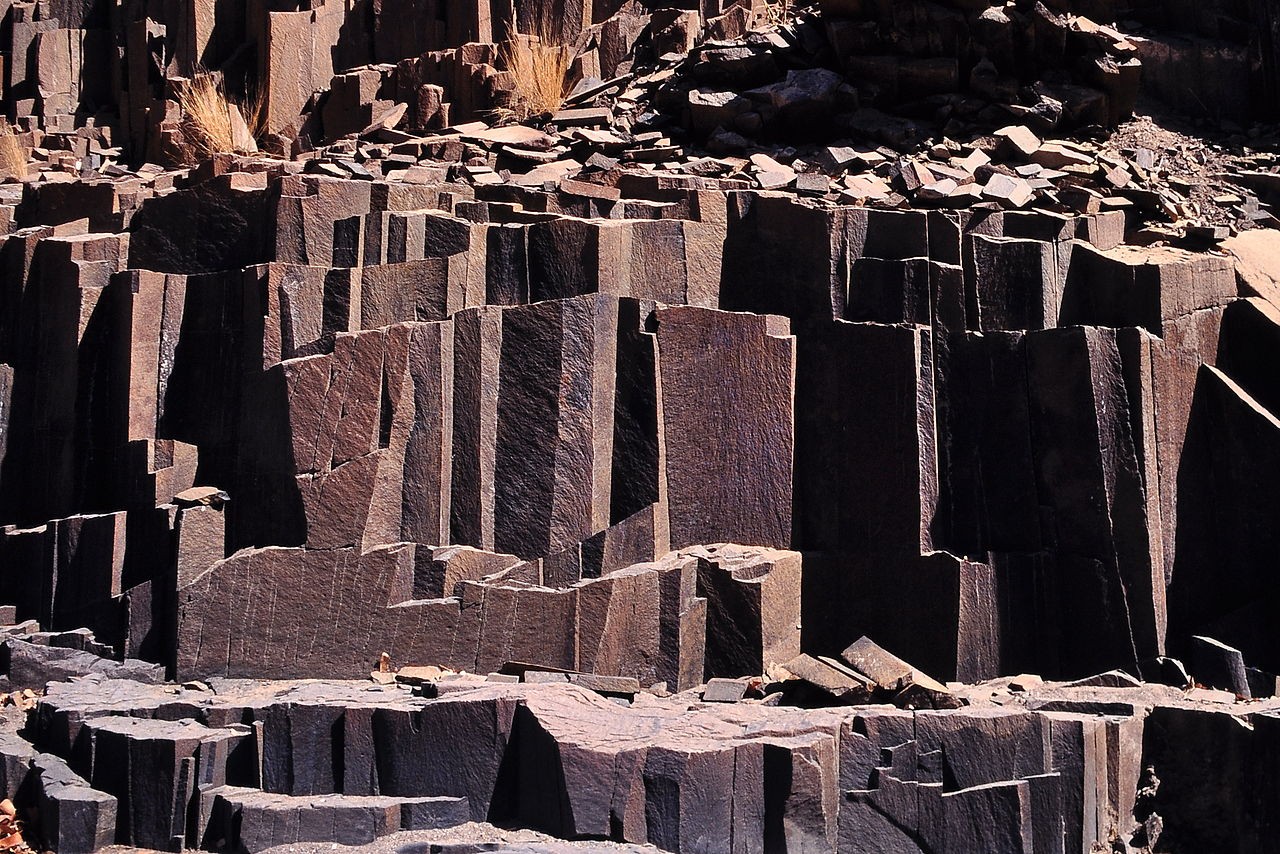
Image credit:
Schnobby
Basaltic lava cools down fairly rapidly after an eruption compared to other types of molten rock. As it cools, it shrinks and can crack into tall columns. While hexagonal columns are quite common, anywhere from 5-8 sides can be expected.
Devils Tower in Wyoming has incredible basalt columns that are around 100 meters in length.
Supercell thunderstorms
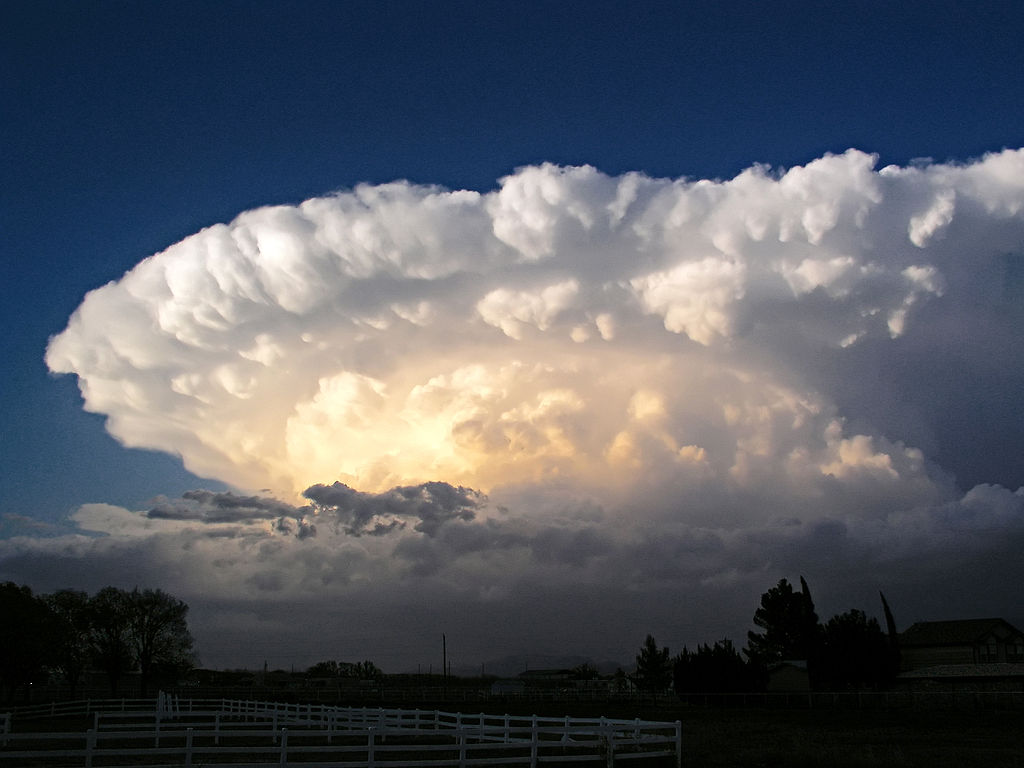
Image credit: NOAA/Greg Lundeen
A
supercell is more than an ordinary thunderstorm. They’re a rare type of severe storm that can produce tornadoes, torrential rain, and large chunks of hail. The strong winds within the cell can last for several hours and exceed speeds of over 100 mph (160 km/h).
Penitentes
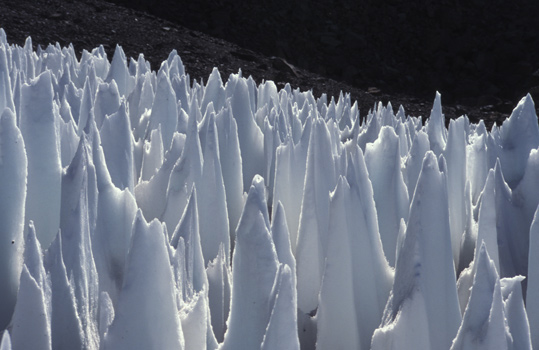
Image credit:
Arvaki
Steep blades of snow called penitentes are created in high altitudes when the sun gets so hot, the snow sublimates instead of melting to a liquid. This causes the water to go directly from a solid to a gas, as this transition is more energetically favorable. The shape of the snow-covered area influences the shape of the blades.
Volcanic lightning
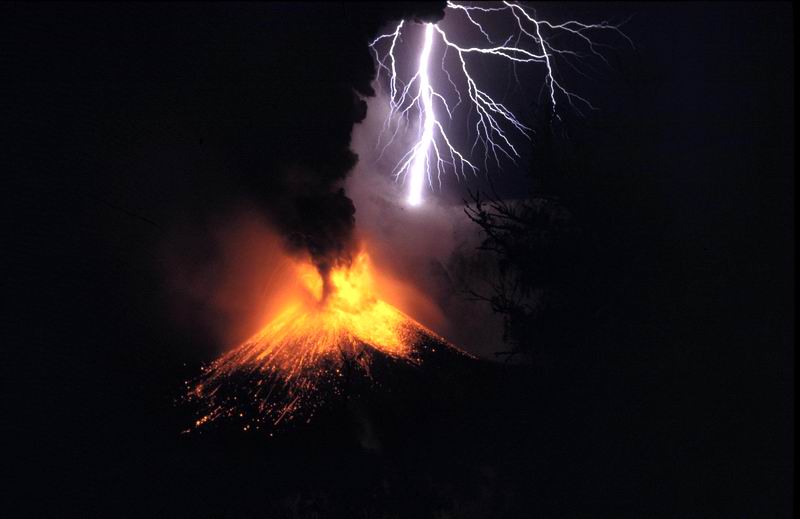
Image credit:
Oliver Spalt
As if volcanic eruptions or lightning weren’t bad enough on their own, they can sometimes come together to form
volcanic lightning, also known as a dirty thunderstorm. It isn’t entirely clear why this happens, but scientists suggest that it could be the positively-charged particles in the volcano reacting with negatively charged particles in the atmosphere. In order to balance out the charges, the electricity is likely discharged as lightning.
Snow donut
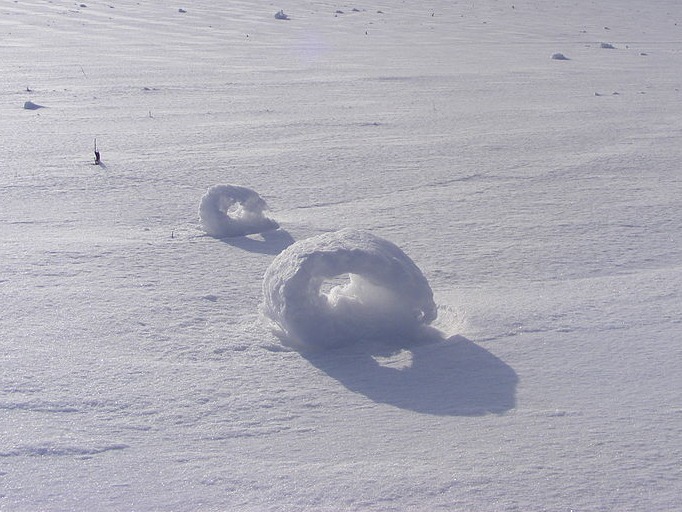
Image credit:
Salvi 5
The same way that large snowballs can be pushed around to make the base of a snowman, sometimes the wind can
blow around snow to form donut shapes or large tubes. The snow needs to be slightly wet so the snow can stick together, but still light and strong enough to hold up to the wind.
Sundog
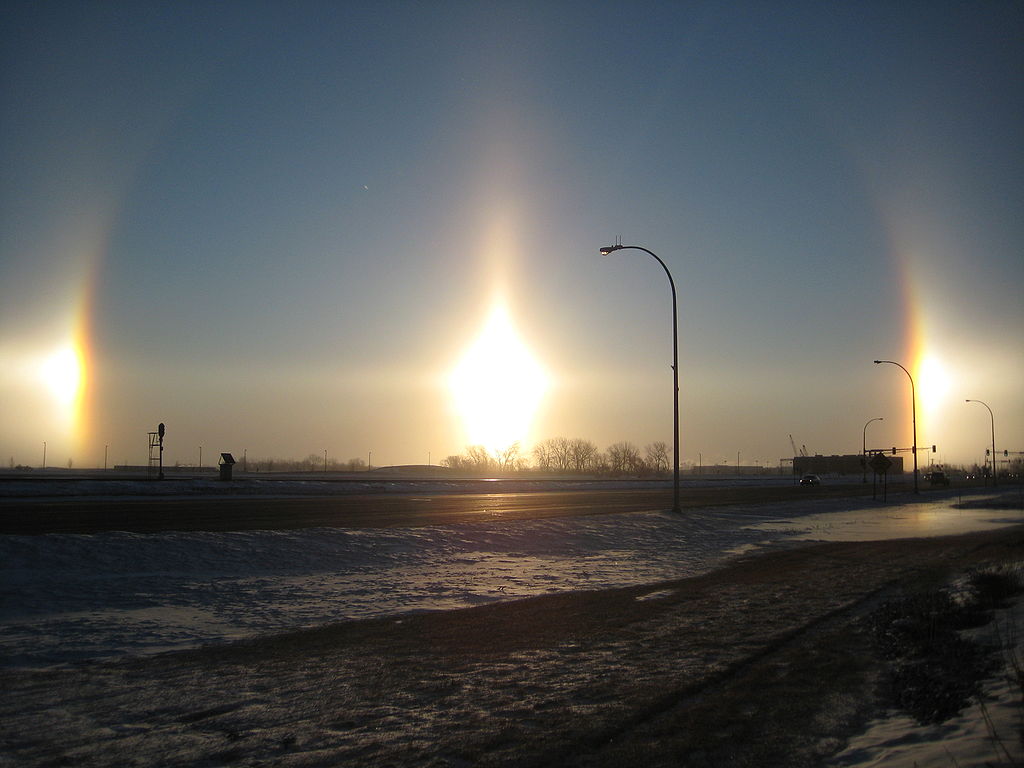
Image credit:
Gopherboy6956
Just like fire rainbows,
sundogs appear when sunlight passes through ice crystals in the air. When the sun is fairly low in the sky, the light passes through plate-shaped ice crystals in cirrus clouds. This causes two bright spots to appear on each side of the sun, connected by a halo.
Hole punch clouds
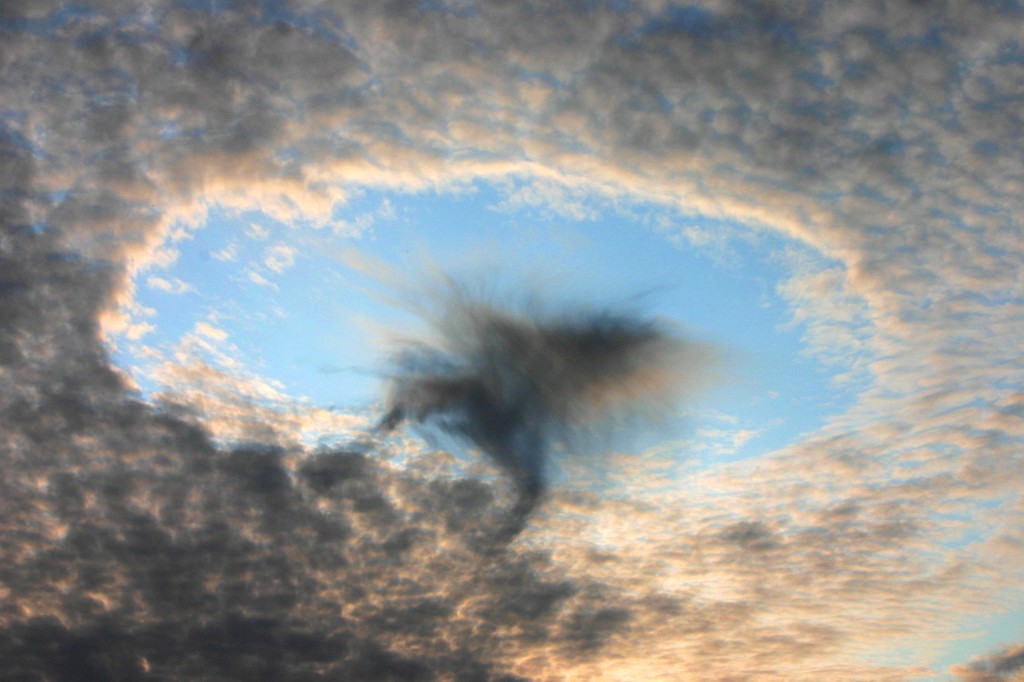
Image credit:
H. Raab
Hole punch clouds, correctly called
fallstreak holes, occur when water droplets in clouds have been supercooled, but are not frozen. If a portion of the cloud does freeze, it triggers a chain reaction that draws in droplets in the cloud, creating ice crystals and punching a hole in the middle of the cloud. If you want to try this reaction for yourself, see how you can use water bottles to
turn water to ice instantly.
